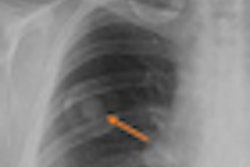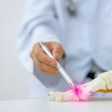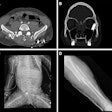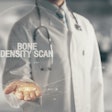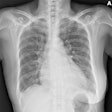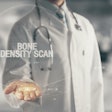PHILADELPHIA - A new software tool can allow monitoring of patient skin dose from clinical fluoroscopy procedures, according to research presented at the American Association of Physicists in Medicine (AAPM) annual meeting.
By utilizing data from DICOM dose structured reports, the software can map patient skin dose during clinical procedures and determine the peak skin dose magnitude and location, according to Beth Schueler, PhD, of the Mayo Clinic in Rochester, MN.
"Hopefully it will provide a more accurate assessment of skin effects," Schueler said. She presented investigational work with the system during a scientific session on Monday at the Philadelphia meeting.
Numerous cases of skin injury from fluoroscopically guided interventional procedures have been reported, and monitoring patient skin dose is recommended by both the U.S. Food and Drug Administration (FDA) and the Joint Commission, Schueler said.
That's difficult to do, however. Newer fluoroscopy systems (post-2006) provide for skin dose monitoring by displaying the reference point air kerma, which is the total air kerma at a defined location (15 cm from the C-arm isocenter toward the x-ray tube) for an entire procedure. Older systems may only display air kerma-area product or fluoroscopy time.
However, these metrics do not provide a good method for estimating peak skin dose, which is needed to assess potential for radiation skin injury, Schueler said.
"We don't have a good way of estimating [peak skin dose] because the beam moves around the patient during the procedure, and there are all sorts of correction factors for backscatter and attenuation and actual skin-source distance," she said.
As a result, the research team sought to develop a software tool that could map patient skin dose and determine the peak skin dose magnitude and location. Making use of DICOM dose structured reports, the application can be used with any fluoroscopy system that provides this output, she said.
Just starting to become available in the market with commercial fluoroscopy systems, these DICOM dose structured reports include technical information for each "irradiation event," such as an acquired image, series, or fluoroscopy foot-switch activation, according to Schueler.
The software tool gathers technical information, including:
- kVp, mA, time
- Filter, pulse rate
- Air kerma-area product
- Reference point air kerma
- C-arm angulation
- Table location
To test the software, the researchers used an Axiom Artis angiography system (Siemens Healthcare, Malvern, PA) with standard male and female phantoms.
Utilizing the position of the patient on the table, backscatter, and table attenuation, the software calculates air kerma to 1-cm2 regions on the patient's surface, which is approximated as a geometric mathematical model using SolidWorks simulation software, according to the researchers.
Some user input from a physicist and technologist is also required during the process. Physicists enter data from the fluoroscopy system, including irradiation field shape (circle or square), a correction factor for integrated dosimetry system air kerma-area product and reference point air kerma values, table and pad attenuation factor, backscatter factor, and compressed pad thickness.
Technologist entries per procedure include patient gender and patient orientation (supine, prone, headfirst, feetfirst), as well as the distance between the top of the table and the top of the patient's head to coordinate the patient's location relative to the table, she said.
Information from the dose structured report for each irradiation event is recorded in a database. The location of the x-ray source and isocenter for each irradiation event is determined using fields from the structured report, C-arm angulation, and table location values. The user-inputted data also contribute to the location of the reference point.
The irradiated area is then determined in a plane through the reference point by calculating the ratio of the air kerma-area product value to the reference point air kerma value, Schueler said.
With this data, a cone can be defined. Skin dose can then be computed by examining surface points on the phantom that lie within the cone. Air kerma to each phantom surface point can then be determined; skin dose is calculated by correcting that air kerma value for dosimetry correction factor, table and pad attenuation, backscatter, and mass-energy-absorption coefficient, Schueler said.
These surface point values are then presented as a color-coded skin dose map.
Schueler acknowledged potential sources of error in calculating skin doses with this technique, including its current use with simplified phantoms that do not match actual patient contours.
"We'd like to replace that phantom with something more clinical," she said.
Also, backscatter is not a constant factor, so future work will define backscatter based on the beam energy and irradiated area, according to Schueler.
In addition, collimator positions could be used instead of a simple circle or square to depict the irradiated area. While these positions are not in the dose structured report, they could be retrieved from image headers, she said.
Schueler said the researchers would also like to employ more accurate table and pad attenuation to account for angulation. They also wish to further evaluate the use of wedge filters, because these equalization filters can erroneously provide a low value for reference point air kerma.
By Erik L. Ridley
AuntMinnie.com staff writer
July 21, 2010
Related Reading
High cardiac imaging doses seen in U.S. population, July 9, 2010
Endoscopist experience tied to radiation exposure during ERCP, May 5, 2010
FDA hearings rise above medical radiation rhetoric, March 31, 2010
Radiology gears up for FDA radiation hearings, March 30, 2010
New paper updates guidelines on fluoro radiation injuries, February 18, 2010
Copyright © 2010 AuntMinnie.com






